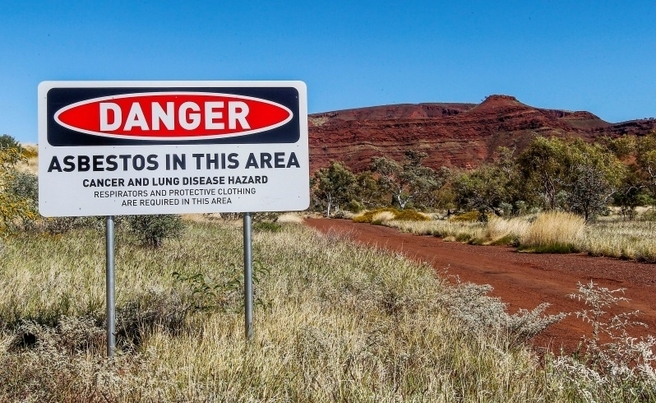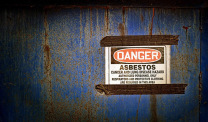Photos Expose Hazardous Visits to Asbestos Town Continue
Asbestos Exposure & BansWritten by Travis Rodgers | Edited By Amy Edel

Recent photos document what appears to be an unauthorized visit to a former asbestos mining town. The Facebook photos show Dale Hawkins exploring old mine shafts in Wittenoom, Australia where toxic blue asbestos was mined several decades ago. Hawkins claims the pictures were from a trip in 2021, before it was officially illegal to enter the town.
Hawkins’ first-person perspective images show ghost-town remains of the western Australia town about 880 miles north of Perth. The contamination was so severe, Wittenoom was removed from maps and road signs in an attempt to keep people away.
The Western Australian Department of Planning, Lands and Heritage says unauthorized visits to Wittenoom can lead to prosecution. The Wittenoom Closure Bill became law in March 2022.
Tourists have been warned to stay away from Wittenoom for years. More than 2,000 Wittenoom residents and former mine workers have died from mesothelioma. Asbestos is the primary cause of this malignant cancer.
The Australian agency released a statement that read in part: “If someone is found to be accessing or camping in areas they have been advised against, including the former mine, action can be taken by the Department. We cannot be any clearer, it is not safe to visit Wittenoom at any time due to asbestos contamination.”
Unauthorized Visit to Wittenoom
While Hawkins wore personal protective equipment during his exploration, Hawkins admits he thought the risk from being in the asbestos-contaminated town was low. While the risk of developing mesothelioma increases as the amount of exposure increases, there is no safe level of asbestos exposure.
“The biggest risk in my opinion was getting lost inside the mine,” Hawkins told ABC Radio Perth. “It goes extremely deep. It’s absolutely pitch black. There’s no reception out there and there are 4-way intersections, one after another, so getting disorientated is fairly easy, and absolutely no one is coming in to look for you.”
He uploaded his photos from Wittenoom to a mining-related Facebook page. Hawkins says when he saw the reactions to his photos online, that’s when he realized his visit was “extremely risky.”
Wittenoom’s Deadly History
There was a long history of asbestos mining in Australia. Widespread mining began in the west of the country in the 1930s following the discovery of crocidolite asbestos, also known as blue asbestos. The Wittenoom mine shipped more than 165,000 tons of crocidolite between 1943 to 1966.
Health concerns forced the government to begin shutting down the entire town in the 1970s. Wittenoom is known as the largest contaminated area in the southern hemisphere.
The Wittenoom Closure Bill gave the Australian government authority to remove all of Wittenoom’s remaining homes and infrastructure. Decontamination of the entire area, estimated to cost billions of dollars, wasn’t done.
Lorraine Kember, author and contributor to Asbestos.com, shared that her husband, Brian, spent a few months in Wittenoom as a child. Brian was diagnosed with pleural mesothelioma 45 years later. He died 2 years after his diagnosis at the age of 54.
Brian’s father, Vic, worked at the mine site. He also died of mesothelioma. Brian’s mother Dorrie passed away from lung cancer.
Experts fear many more people who worked in the Wittenoom mine are likely to develop mesothelioma or other asbestos-related diseases. In total, around 20,000 people lived in the town and were also enveloped in a haze of deadly asbestos dust.
The latency period of mesothelioma is 20 to 60 years. Symptoms may not present until decades after exposure.
Asbestos Poses Risk to Urban Explorers
Asbestos poses a serious health threat for urban explorers. People who enjoy visiting abandoned buildings as a hobby may have an increased risk of developing mesothelioma or other asbestos-related diseases.
Older buildings likely contain asbestos. With damage and degradation of building materials, they break down and release asbestos fibers. Asbestos particles are too small to be seen with the naked eye, so people may not realize they’ve been exposed. Even short-term asbestos exposure can result in inhaled fibers that can cause disease.
Urban explorers have consistently ignored warnings and advisories against visiting Wittenoom over the years. Each time these incidents become known, officials try to get the word out to steer clear of the former asbestos mining town. Melita Markey, chief executive of the Asbestos Diseases Society, told ABC Radio Perth that the pictures alarmed and saddened her.
“It just shows a total lack of understanding of the dangers of blue asbestos,” Markey said. “How minute the fibers are and how they can severely impact people 30 years from now.”






